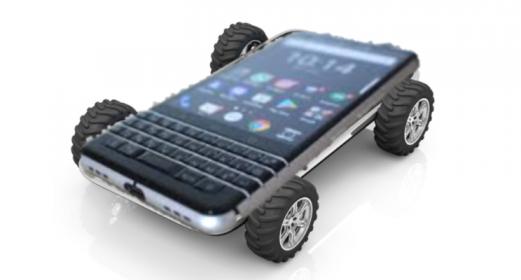 Jalopnik’s report that car maker Fiat Chrysler Automobiles (FCA) had experienced a failed software update that had thrown the infotainment systems in some MY 2017-18 vehicles into a never-ending cycle of rebooting was a reminder that cars are indeed becoming smartphones on wheels. Blackberry CEO John Chen has no doubts on this subject. Chen expects Blackberry’s QNX to be the operating system of choice for this new paradigm.
Jalopnik’s report that car maker Fiat Chrysler Automobiles (FCA) had experienced a failed software update that had thrown the infotainment systems in some MY 2017-18 vehicles into a never-ending cycle of rebooting was a reminder that cars are indeed becoming smartphones on wheels. Blackberry CEO John Chen has no doubts on this subject. Chen expects Blackberry’s QNX to be the operating system of choice for this new paradigm.
With the onset of vehicle connectivity, car owners are confronting issues that were previously confined to phones, televisions or desktop computers. Is this device secure? Should I accept this software update? How do I get help? How do I reboot?
Blackberry was there at the creation, providing its QNX operating system underlying General Motors’ OnStar telematics system. (Blackberry acquired QNX from Harman International in 2010.) Software updates are nothing new for QNX or Blackberry.
When John Chen took the reins as interim CEO of Blackberry in 2013 the company was well into its downward spiral in the handset business, mirroring the experience of Nokia in the face of an industry-wide UI and OS shift driven by Alphabet, with the help of Samsung, and Apple. Both Blackberry and Nokia sought to reverse their fortunes by shifting their focus from one operating system to another.
Nokia’s switch from Symbian to Windows failed miserably. Blackberry’s leap from its proprietary operating system to QNX also failed, but, unlike Nokia, Blackberry was able to shift its focus to leveraging its IP portfolio and security credentials while endeavoring to make cars more like smartphones – a process that is unfolding slowly but steadily while the rest of Blackberry’s business continues to turn around. (Q3 2018 earnings beat estimates – though the automotive portion of Blackberry’s business was relatively flat.)
What has emerged from this effort, first hinted at last year, is an expansion of Blackberry’s QNX real-time operating system beyond in-dash infotainment systems, where the company dominates, to vehicle gateways and safety systems while bringing cybersecurity and over-the-air software update technology along for the ride. (Important to note QNX’s use in other embedded environments including aerospace, industrial automation and numerous other industries and applications.)
The shift in strategy points toward an increase in Blackberry software content per car and a more central role for the company in defining future vehicle architectures. Signing on for this new adventure are strategic partners including Denso, Intel, Nvidia, Delphi, Renesas, Baidu, Bosch, Magna, Qualcomm, Ford and Volkswagen among others.
The transformation of Blackberry has not arrived without considerable pain and substantial staff reductions. Like Nokia’s, Blackberry’s handset decline was precipitous allowing little margin for error for the company’s shift away from the smartphone business.
Even more dicey has been attempting to leverage the generally slow growth, low margin and long product life-cycle automotive business as a fulcrum. Chen’s efforts have so-far proven successful in spite of the challenges.
The bottom line is that the car has indeed become or is becoming a smartphone on wheels. What company is better positioned to bring about this transformation than a company, Blackberry, with unmatched security credentials and an already dominant position in the dashboard?
In fact, the onset of the Android OS in vehicle dashboards at Honda, Cadillac and across Asia, will be facilitated at some carmakers by Blackberry’s QNX operating system and its hypervisor technology. Unlike a smartphone, a car is a multiple network, multiple OS environment where competing systems can co-exist.
Blackberry’s work with Nvidia, Qualcomm, Renesas and Intel sets the stage for an expansion of its hypervisor technology enabling re-use of powerful embedded processing resources. Blackberry is not alone in this regard, but it is a leader.
At the core of Blackberry’s updated automotive strategy is the rapid industry-wide adoption of advanced safety systems and autonomous driving development and the growing requirement for an OS like QNX with its ISO 26262 ASIL D safety certification. The demand is paving the way to a broader role for Blackberry in cars. So, yeah, cars are becoming more like smartphones. Which is very good news for Blackberry.
For more information:
– Operating Systems for Autonomous Vehicles
– Blackberry Pivots to Security, IoT in Cars
Share this post via:





The Quantum Threat: Why Industrial Control Systems Must Be Ready and How PQShield Is Leading the Defense